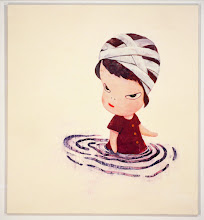... arguments about blacks’ affinities with or status as animals were used to justify their enslavement before the Civil War as well as the denial of their civil and political rights after it. Consequently nineteenth- century black writers necessarily took up the task of opposing Western civilization’s long history of categorizing people of African descent as subhuman animals – a task that would seem... to entail distancing African Americans from the animal world in order to establish their status as full members of the human race.The ideological deck does seem to be stacked that way in antebellum anti-slavery literature, by black and white writers alike. Mason quotes a famous example from Frederick Douglass's 1845 autobiography:
We were all ranked together at the valuation. Men and women, old and young, married and single, were ranked with horses, sheep, and swine. There were horses and men, cattle and women, pigs and children, all holding the same rank in the scale of being, and were all subjected to the same narrow examination.Mason rightly points out that the language and logic of this passage are steeped through and through in the ideology of "Great Chain of Being." It derives its moral force from the belief that human beings are superior to mere "brute creation." The post-humanist in me twinges a bit when I read a passage like this: not so much because it assumes human superiority, actually, but because the animals here are so... clean. So disembodied. Following Donna Haraway's dictum that animals are "not here just to think with," but "here to live with" - you would have to say that Douglass's horses, sheep, and swine are decidedly of the first, "just to think with" species.
One thing I've started to notice in my recent readings are the rhetorical animals that have clearly consorted with creatures who were "there to live with." Consider these examples:
From Slavery in the United States: A Narrative of the Life and Adventures of Charles Ball, a Black Man (1837), after an escape attempt by Ball was foiled by slave-catchers: "They then bound me with cords, and dragged me by the feet back to the house, and threw me into the kitchen, like a dead dog."Like a dead dog, like a slaughtered hog, like newly killed beef: these are raw, pungent figures that don't point to some rarefied universal order or neatly graduated "scales" of being. Rather they give us glimpses into a world in which slaves lived alongside - and died with - animals under the most unsentimental circumstances possible. What's striking, too, is that these analogies don't just show us how humans are treated as animals in slavery, but also how animals are themselves treated like animals. How they are made killable, disposable, their carcasses thrown with impunity into the death pits of history. (Hat tips, as they say in blogospherese, to Haraway again, Jacques Derrida, and Giorgio Agamben.)
From an 1840 account of the experience of James Curry, born a slave in North Carolina, published in the Liberator, describing the vicious and fatal whipping of a slave on a neighboring plantation: "His flesh, at length, would draw and quiver all over his body, like newly killed beef, and finally it appeared as though it was dead. The poor creature was all the time shrieking, and begging, and pleading for mercy; but it had no more effect upon them than would the squealing of a hog they had been killing."
From an 1852 interview with the escaped slave James Smith in the Voice of the Fugitive, conducted by the well-known fugitive-turned-abolitionist Henry Bibb, again after Smith had been beaten after an unsuccessful attempt to run away: “The next morning about 9 o'clock when he awoke from this half dead state, bathed in blood, he found himself bound with strong cords, lying in a horse cart (like a slaughtered hog)”**
** I first learned of Ball and Smith's narratives from the historian John Campbell, whom I've cited a couple times in this blog and whose two articles (that I know of) on dogs and slavery have been indispensable sources. Both Ball and Smith had dogs who figured prominently in their life under and away from slavery, which I hope to blog about soon. Smith's story has apparently been turned into a children's book.







No comments:
Post a Comment